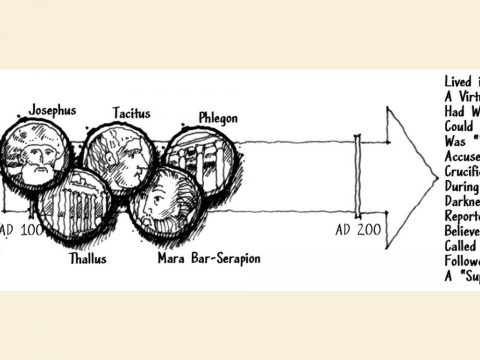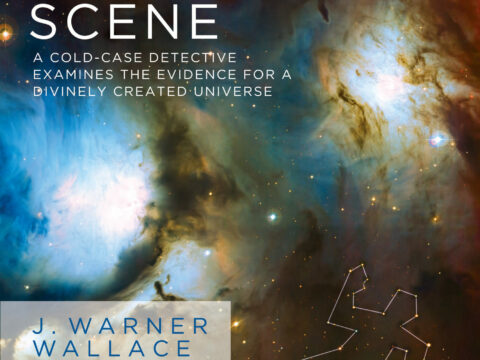The question of God’s existence might be compared to our murder investigation. We assembled the circumstantial evidence and asked the question “How reasonable is it that this evidence can be interpreted in any way other than to indicate that Ron did this?” As the evidence accumulated, the likelihood of Ron’s innocence shrank. Similarly, we can look at the evidence in our world (and in the universe) and ask, “How reasonable is it that this evidence can be interpreted in any way other than to confirm the existence of God?” We live in a universe filled with characteristics (evidences) that demand an explanation. Let’s consider just a few of them:

A UNIVERSE WITH A BEGINNING
The vast majority of scientists continue to acknowledge that the universe came into being from nothing at some point in the distant past. Many have articulated this as the “big bang theory” (commonly referred to as the standard model of cosmology). But if the universe “began to exist,” what “began” it? What caused the first domino to fall in the long sequence of cause-and-effect dominoes? If this first domino fell over as the result of being toppled by some other domino, how far back does this sequence go? Scientists understand the absurdity of an endless sequence of dominoes spanning back into infinite eternity; everyone is looking for an “uncaused first cause” that is capable of starting the domino run all by itself. This “uncaused first cause” must exist outside of space, time, and matter (as nothing has ever been observed to cause itself to exist). What could be uncaused and powerful enough to cause the universe? If the caused universe once was not, why is it here at all? As Gottfried Leibniz famously wrote, “Why is there something rather than nothing?”
We typically think of God as an eternal, all-powerful Being who exists outside of space, time, and matter. The evidence of the finite universe (a universe that has a beginning) points circumstantially to the existence of such a God. An incredibly powerful, uncaused first cause outside of space, time, and matter appears to be necessary to bring our universe into existence. If an eternal, all-powerful Being exists, Leibniz’s famous question has an answer. A Being of this nature might freely choose to create a universe that demonstrated His power and served as a place where His cherished creatures could begin to understand His nature. The causal evidence of the universe is a significant piece of circumstantial evidence for God’s existence.
A UNIVERSE WITH THE APPEARANCE OF DESIGN
Science has also helped us understand that the universe appears to be remarkably “fine-tuned” to support the existence of life. There are a number of forces in the cosmos that are precisely calibrated to work together to make life possible. The laws of electron mass, atomic mass, proton mass, strong nuclear force, weak nuclear force, speed of light, cosmological constant, gravity, mass of the universe, and many more are finely tuned to govern the universe and our world. Even within the atom itself, the precise relationship between protons, neutrons, and electrons appears to be fine-tuned and calibrated. According to Stephen Hawking, “If the proton-neutron mass difference were not about twice the mass of the electron, one would not obtain the couple of hundred or so stable nucleides that make up the elements and are the basis of chemistry and biology.” The forces in our universe, both small and large, appear to be fine-tuned to make life possible. 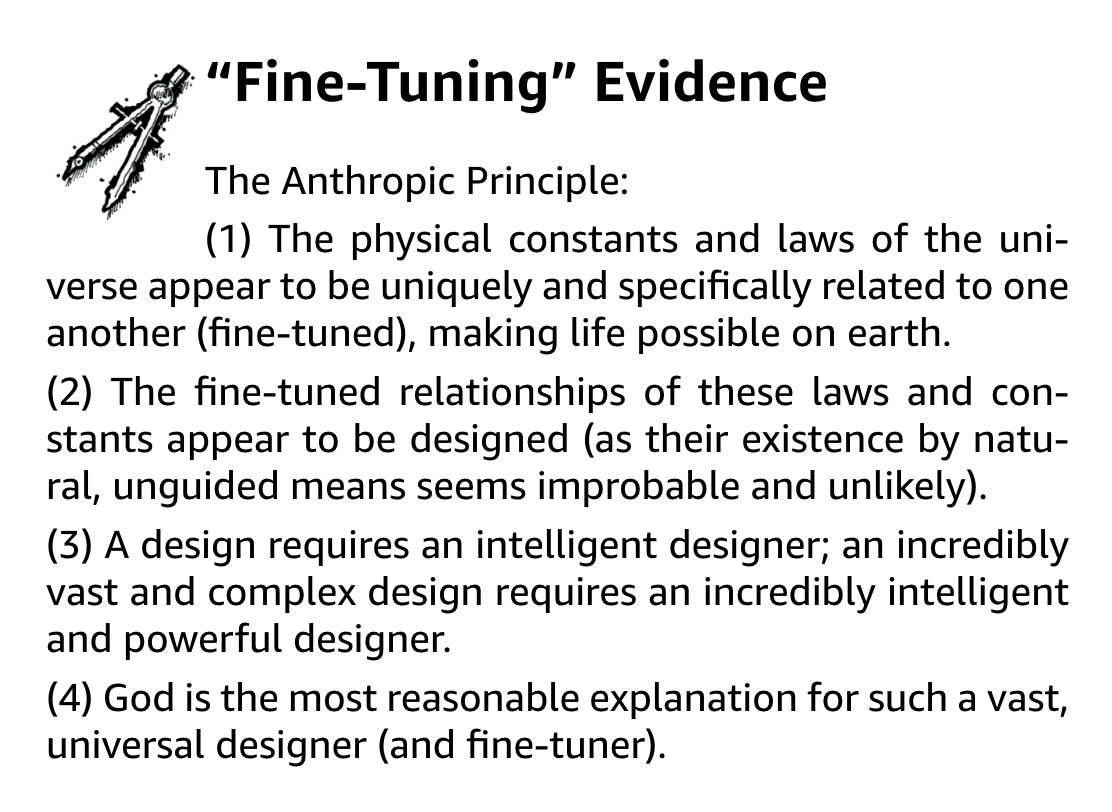
In addition to these cosmic and atomic forces, there are also specific conditions that are necessary for a planet to support life. If, for example, the size of the earth were altered slightly, life would not be possible on the planet. When a planet is too small, it loses internal heat and cannot keep its interior core active; if a planet is too large, it will have too much water and too thick of an atmosphere. As it turns out, the characteristics of a planet must be just so for life to be possible. The presence of liquid water, the proper distance from a star, the existence of a terrestrial crust, a properly proportioned magnetic field, the correct ratio of oxygen to nitrogen in the atmosphere, the existence of a large moon, and a mother star of a specific and particular size and type are all required. The path that leads to life on earth seems to be very narrow and difficult, yet the forces that govern the universe (and our world) appear to have a goal in mind: the production of a universe in which carbon-based life can emerge.
How can random forces be so conspicuously aligned and organized to support life? Is it merely a coincidence? That’s certainly possible, but is it reasonable? If God exists, He is capable of fine-tuning the universe, and He just might have a reason to do so. The Bible, for example, describes God as the “Maker of heaven and earth” (Ps. 115:15), and describes Him as the Being who designed and created the universe with the earth in mind. The fine-tuning of the universe is another important piece of circumstantial evidence that points to the existence of an intentional, supernatural, powerful, and creative Being.
A UNIVERSE WITH COMPLEX LIFE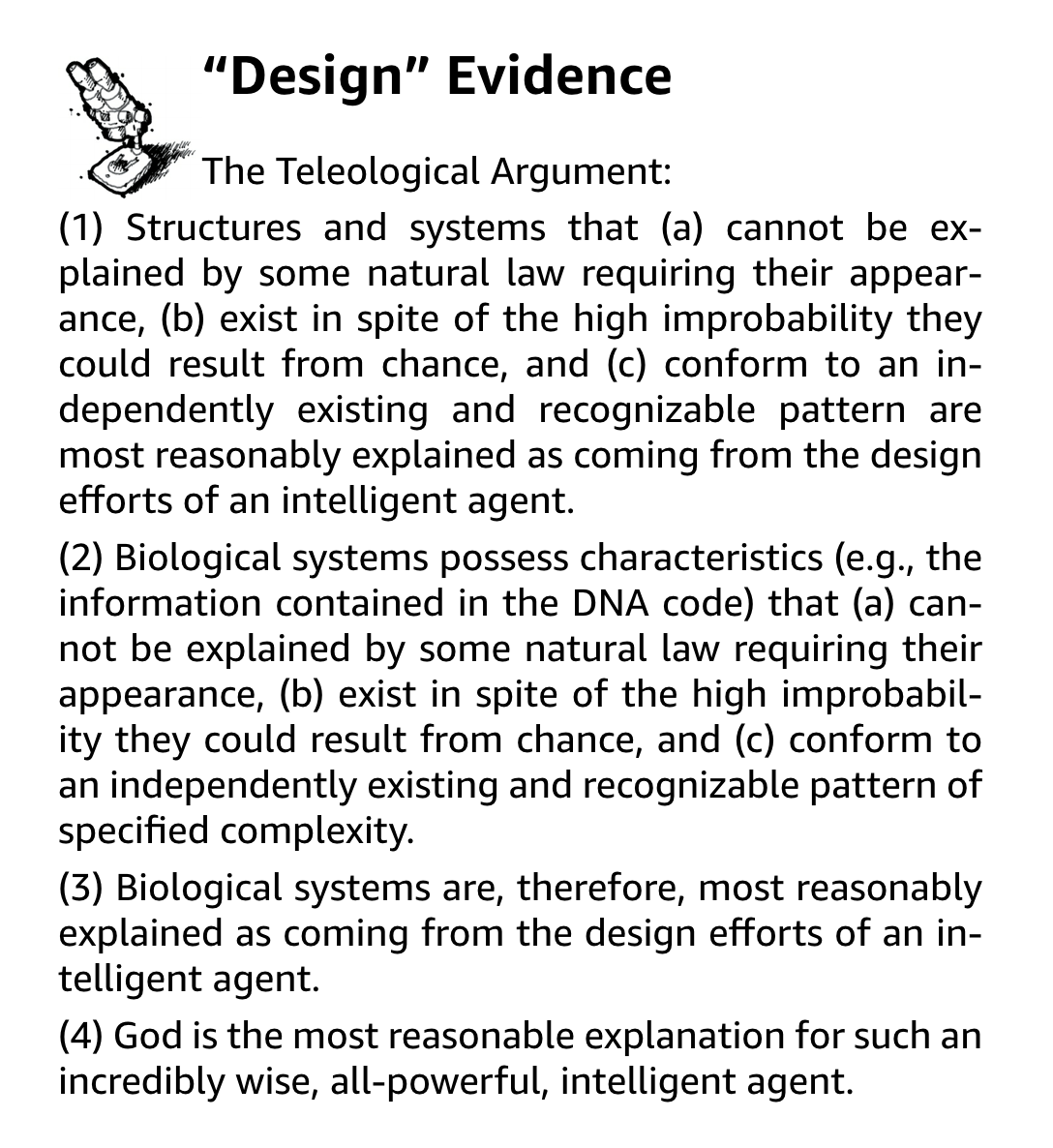
Scientists observe what they call the “appearance of design” in biological systems. Even Richard Dawkins (the renowned and vocal atheist and emeritus fellow of New College, Oxford) concedes that biological systems often appear designed (although he proposes that a blind, natural process can somehow account for this appearance). There are many examples of cellular biological machines that demonstrate characteristics of “specified complexity” and bear a striking resemblance to systems and structures that have been designed by humans (intelligent agents). These characteristics lead many to the reasonable belief that unguided forces are simply insufficient to create such structures. William Dembski (the well-known mathematician, statistician, theologian, and intelligent-design advocate) has argued that specified complexity (and, therefore, the intervention of an intelligent agent) can be identified by using an “explanatory filter.” If an object or event (1) cannot be explained by some natural law that necessitates its appearance, (2) exists in spite of the high improbability that it could occur as the result of chance, and (3) conforms to an independently existing and recognizable pattern, the most reasonable inference is that it is the product of an intelligent designer.
Perhaps the most important evidence suggesting the involvement of an intelligent designer is the presence of DNA and the guiding role that this DNA plays in the formation of biological systems. Science has demonstrated that DNA is actually a digital code; DNA is specified information. DNA exhibits characteristics that, when examined through Dembski’s explanatory filter, are best explained by the creative activity of an intelligent designer. As Stephen C. Meyer argues in his book Signature in the Cell, “Intelligence is the only known cause of complex functionally integrated information-processing systems” (italics original). In other words, in the history of scientific and intellectual research, we can find no example in which information came from anything other than an intelligent source. If DNA is a form of specified information that guides the complex process of cellular formation and biological structures, “intelligent design stands as the best—most causally adequate—explanation for this feature of the cell, just as it stands as the best explanation for the origin of the information present in DNA itself.”
If biological systems display characteristics of design (in the form of specified complexity), it is reasonable to conclude that a designer has been involved in the process. What kind of designer could be responsible for the information, complexity, and specificity we see in biological systems? If God exists, He would certainly possess the characteristics and power to accomplish such a thing. The presence of specified information in biological systems is yet another piece of circumstantial evidence that points to the existence of God.
A UNIVERSE WITH OBJECTIVE MORALITY
Each and every one of us feels a certain obligation to moral duty. We have an intuitive sense of moral oughtness; we recognize that some things are right and some things are wrong, regardless of culture, time, or location. We understand that it’s never morally right to lie, steal, or kill for the mere fun of it. These moral laws are transcendent and objective: their truth is not a matter of subjective opinion. Regardless of how you or I might feel about these laws, the truth of their moral status lies in the actions themselves, not in our subjective opinions about the actions. We may discover moral truth, but we do not invent it. Because of this, we are able to look across history and culture and make meaningful judgments about the moral rightness or wrongness of any given set of actions. We recognize that culture itself cannot be the source of moral law, and that there is instead a “law above laws” that transcends all of us. So, where does transcendent, objective moral truth come from?
All moral laws come from moral lawmakers. If there exists even one transcendent moral law (e.g., it’s never morally right to kill someone for the mere fun of it), there must exist a transcendent moral source.
Darwinian evolution has great difficulty accounting for the existence of objective moral obligations for two reasons. First, if we live in a purely natural, physical world governed by the “cause and effect” relationships between chemical processes in our brains, “free will” is an illusion, and the idea of true moral choice is nonsensical. How can I, as a detective, hold a murderer accountable for a series of chemical reactions that occurred in his brain when he didn’t have the freedom to escape the causal chain of biological events?
In addition to this, Darwinian evolution cannot produce truly objective morality. If moral truths are merely behavioral concepts that humans have created to aid their survival, morality is once again rooted in the subject (humans) rather than in the objective moral truth claim under consideration (e.g., whether it’s ever morally right to kill someone for the mere fun of it). If morality is simply a convention of our species, we’d better hope that science-fiction writers are wrong about the possibility of sentient life in other parts of the universe. Unless there is a “law above the laws,” an entity such as Star Trek’s United Federation of Planets would be powerless to stop immoral behavior. Objective morality must be rooted in something bigger than the evolutionary development of any one species.
If God exists, He would certainly transcend all species, cultures, locations, and moments in time. For this reason, the existence of transcendent moral truth is best explained by the existence of God as the transcendent source of such truth. Once again, we have an important piece of circumstantial evidence.
The cumulative circumstantial case for God’s existence is much like the circumstantial case we made in our murder investigation. The more evidence we gathered, the clearer it was that Ron’s involvement as the killer could account for all of it. Ron was either incredibly unlucky or incredibly guilty. At some point we recognized that the evidence made Ron’s guilt in the matter the only reasonable inference, and we got there without a single piece of direct evidence. In a similar way, the circumstantial evidence in our universe is consistent with God’s existence and involvement as the uncaused first cause, the fine-tuner, the designer, and the moral lawgiver required to account for all the evidence we observe. As in the homicide investigation, the more evidence we gather, the more reasonable our conclusion becomes. We’ve only briefly described four lines of circumstantial evidence for God’s existence. Much more can (and has) been said about these areas of evidence by the expert witnesses listed at the end of this book. In addition to these evidences, investigators and philosophers have offered many additional arguments (including the Ontological Argument, the Transcendental Argument, the Argument from Religious or Aesthetic Experience, and many more). The cumulative circumstantial evidence pointing to God’s existence is either incredibly coincidental or a compelling indication of the truth of the matter. At some point, God’s existence is the only reasonable inference in light of the evidence, and like our homicide, we can get there without a single piece of direct (or forensic) evidence.
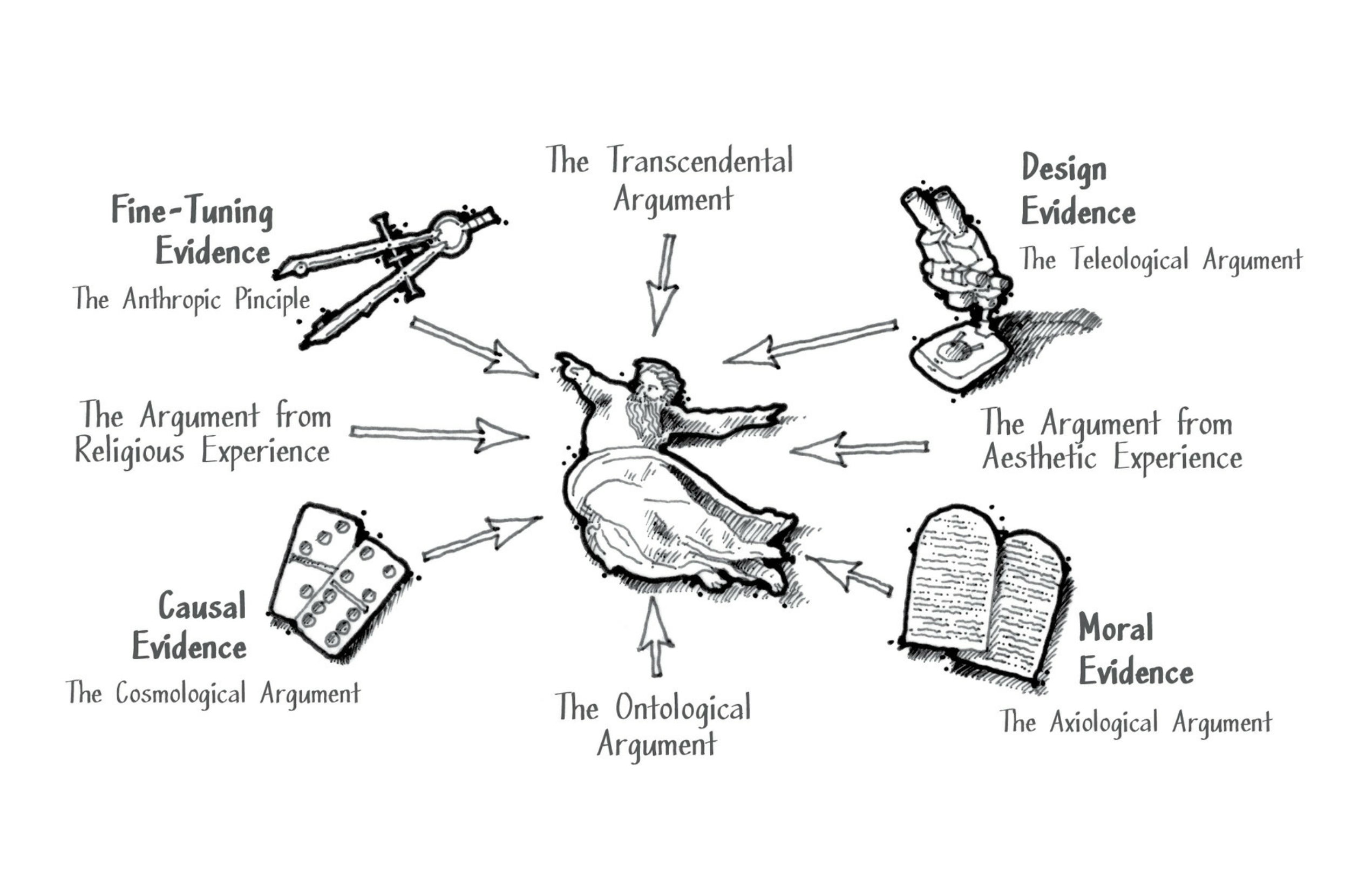
As the circumstantial case against Ron grew, the likelihood of his guilt also grew. As the circumstantial case for God grows, the likelihood of His existence also grows. If the evidence for Ron’s guilt is compelling enough to reasonably conclude that he is guilty, the evidence for God’s existence is compelling enough to reasonably conclude that He exists.
Wallace, J. Warner. Cold-Case Christianity: A Homicide Detective Investigates the Claims of the Gospels.

